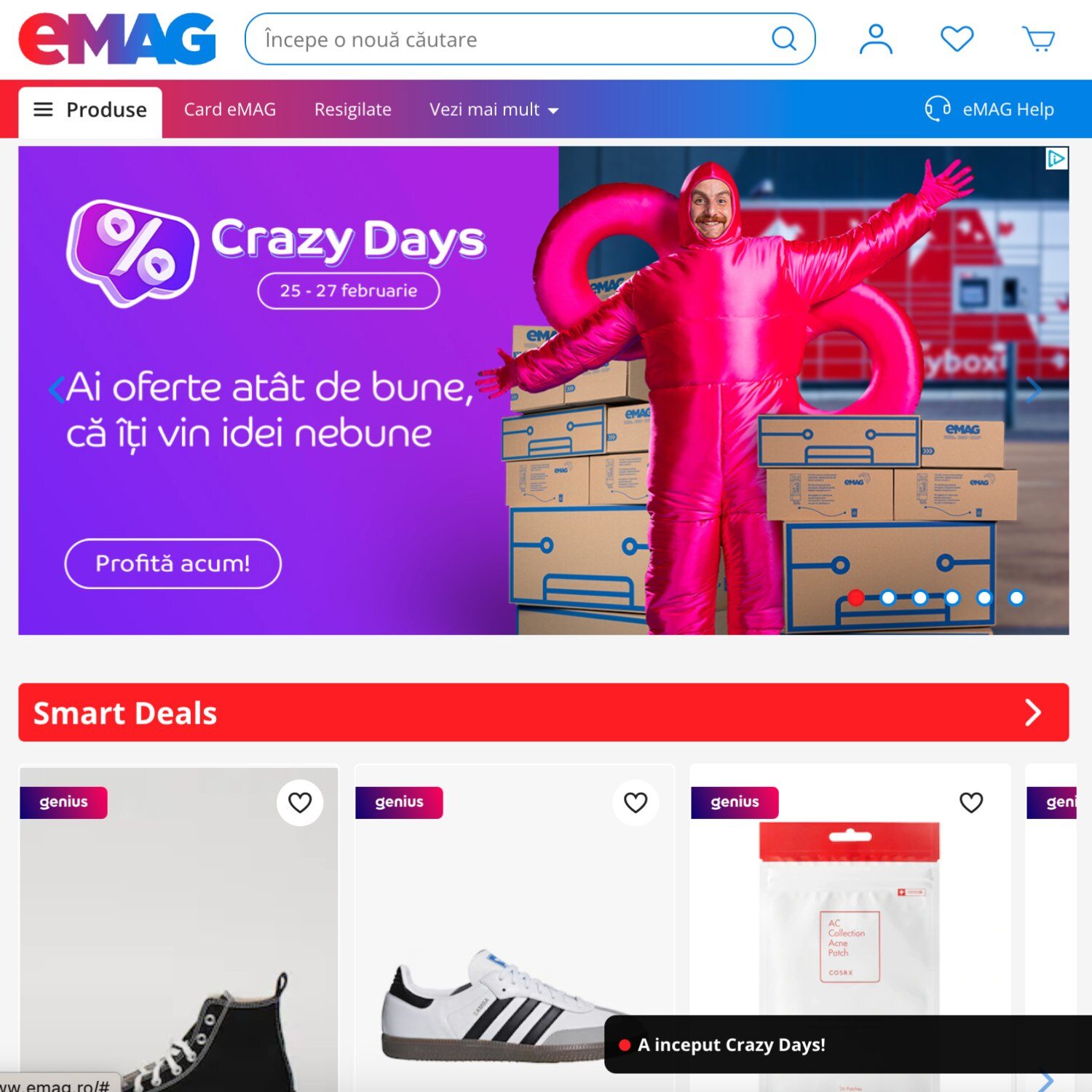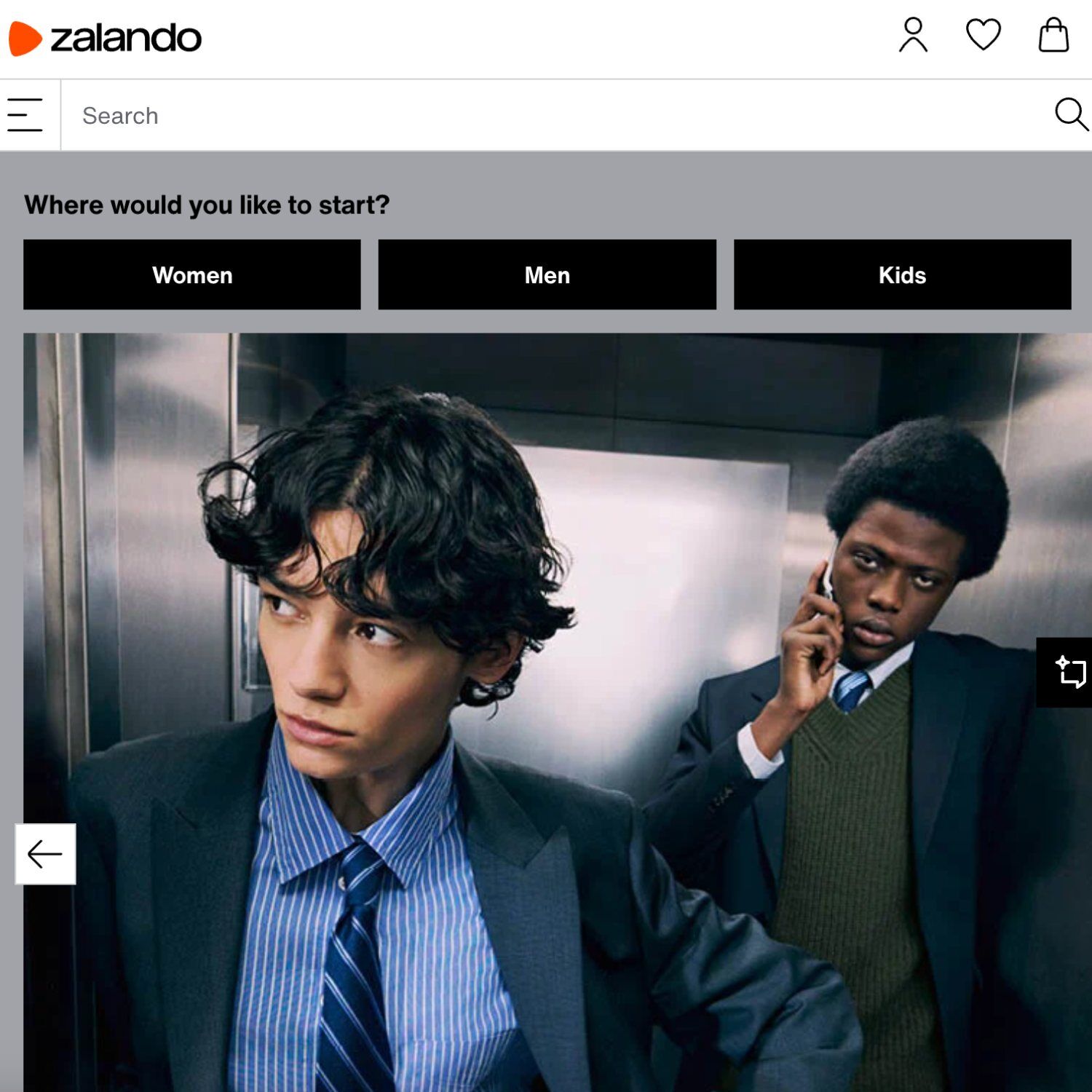Cross-border eCommerce is transforming retail. Discover why EU brands should invest in international expansion and how to manage fulfilment, customer expectations, and hidden costs. Speak to an expert today.
EU eCommerce Playbook: Overcoming cross-border fulfilment challenges
Audio reader
.jpg?width=300&name=What%E2%80%99s-Next-for-Demand-Forecasting-blog-advert%20(1).jpg)
Download your copy of the Demand Forecasting eBook
Reviewing predictive analytics, AI, and sustainability in inventory management.
Download the eBookSelling across borders in the EU presents a lucrative opportunity for retailers, with the market set to reach $5.06 trillion by 2028 - growing at 26.4% annually, but it doesn’t come without challenges. Complex VAT rules, diverse customer expectations, and logistical bottlenecks can make cross-border expansion daunting. However, with a strategic fulfilment approach, brands can significantly reduce costs, improve delivery times, and ensure a seamless customer experience across multiple territories.
This playbook provides a clear roadmap for EU-based brands to navigate cross-border fulfilment challenges, avoid delays, and optimise their operations for success.

Understanding cross-border fulfilment challenges
Before addressing the solutions, it’s crucial to identify the key hurdles that impact brands selling across EU borders.
1. Customs delays and compliance challenges
Navigating customs clearance is one of the biggest headaches for cross-border retailers. Each EU country has unique regulations and processes, leading to unpredictable delays and additional compliance burdens. Key challenges include:
- VAT and duty complexity - Managing VAT compliance across multiple jurisdictions is time-consuming, and mistakes can lead to fines or delays.
- Documentation requirements - Incorrect or incomplete paperwork can stall shipments at customs.
- Regulatory variations - Product labelling, safety standards, and import restrictions differ by country, requiring tailored compliance measures.
2. High cross-border shipping costs
Shipping costs remain one of the biggest barriers to profitable EU-wide eCommerce. Factors driving costs up include:
- Last-mile delivery expenses - Cross-border last-mile networks can be fragmented and costly compared to domestic fulfilment.
- Carrier surcharges - Shipping providers charge premiums for international shipments, especially for express or time-sensitive deliveries.
- Returns handling - Cross-border returns are expensive and complex, often requiring local warehousing or partnerships to manage efficiently.
3. Poor delivery experiences affecting customer retention
Customer expectations across EU markets vary widely, and failure to meet them can lead to lost sales and poor brand perception. Issues include:
- Inconsistent delivery speeds - Slow or unreliable delivery times can lead to high cart abandonment rates.
- Lack of localised fulfilment options - Offering only international shipping without in-country fulfilment can deter customers.
- Transparency and tracking limitations - Inadequate shipment tracking leads to frustration and higher customer service enquiries.
Western vs. Eastern Europe: Tailoring your cross-border eCommerce strategy
When expanding across Europe, brands must consider the differences between Western and Eastern European markets. Each region has distinct customer expectations, logistical landscapes, and regulatory frameworks, requiring a tailored approach.
1. Consumer expectations and shopping habits
Western Europe: Even within this region, there are significant variations in consumer behaviour. For example:
- The Netherlands is similar to the UK, with customers expecting fast delivery, cheap and easy returns, and a seamless digital shopping experience.
- Germany has a slightly higher tolerance for longer transit times, but values customer service in their own language and precise, transparent logistics.
- France is highly nationalistic in its shopping habits, meaning local carriers and culturally adapted sales channels make a major impact on conversion rates.
Eastern Europe: Shoppers in Poland, Hungary, and Romania are more price-sensitive and often prefer cash-on-delivery (COD) as a payment method. Trust in online retailers is still growing, so clear policies and localised customer support can enhance confidence.
2. Logistics and fulfilment considerations
Western Europe: Advanced logistics networks and established 3PL providers enable efficient cross-border fulfilment. Brands benefit from centralised warehouses in countries like Germany and the Netherlands for quicker EU-wide distribution.
Eastern Europe: Logistics infrastructure is improving, but delivery times may be slower due to fewer direct routes. Partnering with regional carriers ensures better coverage and cost efficiency.
3. VAT and regulatory challenges
Western Europe: VAT compliance is relatively standardised with the One Stop Shop (OSS) scheme, but localised regulations still apply.
Eastern Europe: Some Eastern European countries have complex VAT structures and higher import duties. Ensuring proper VAT registration and compliance is critical to avoiding penalties and delays.
4. Localisation and customer support
Western Europe: Local language websites, multiple payment options, and AI-driven customer service enhance brand perception and engagement.
Eastern Europe: Offering customer support in native languages, allowing for offline payments, and working with regional eCommerce marketplaces like Allegro or eMag can drive higher conversion rates.
Tailoring fulfilment and customer engagement strategies to these regional differences will help brands successfully expand their EU footprint while maintaining operational efficiency and strong customer satisfaction.


Scaling your cross-border operations
For brands looking to expand further, scaling operations efficiently is key to long-term success.
1. Investing in scalable fulfilment solutions
Automated warehousing: Implementing smart warehousing solutions can optimise storage, picking, and packing processes.
Demand forecasting: Using AI-driven demand forecasting tools ensures inventory is placed in optimal locations.
Flexible logistics partnerships: Partnering with scalable 3PL providers allows businesses to expand into new markets seamlessly.
2. Expanding payment and checkout options
Multi-currency pricing: Displaying prices in local currencies improves conversion rates.
Diverse payment methods: Supporting regional preferences such as digital wallets and BNPL (Buy Now, Pay Later) options increases accessibility.
Seamless tax and duty handling: Automated tax calculation tools ensure compliance and prevent checkout drop-offs.
3. Strengthening market-specific marketing strategies
Localised marketing campaigns: Tailoring marketing strategies to regional preferences improves customer engagement.
Cross-border SEO strategies: Optimising for multilingual search terms increases visibility in different markets.
Influencer and affiliate partnerships: Collaborating with regional influencers builds trust and credibility with local audiences.
A well-structured approach to scaling ensures brands can grow sustainably while maintaining efficiency and a high-quality customer experience.
Strategies to overcome cross-border fulfilment challenges
To build a competitive advantage in the EU eCommerce market, brands must optimise their fulfilment strategies and streamline operations.
1. Leverage multi-warehouse fulfilment
A decentralised fulfilment approach enables retailers to reduce costs and speed up deliveries. Strategies include:
- Distributing inventory across multiple EU locations - This reduces shipping distances and costs while enabling faster fulfilment.
- Utilising fulfilment partners - Partnering with regional 3PLs (third-party logistics providers) ensures compliance with local VAT and customs regulations.
- Nearshoring solutions - Placing inventory in strategically located warehouses close to key markets improves efficiency and reduces customs-related delays.
- Multi-channel and marketplace integration - Europe is increasingly embracing multi-channel retailing through niche marketplaces like Douglas, Kaufland, Carrefour, and Zalando. Brands expanding from the UK or USA need fulfilment partners with the multi-channel, multi-warehouse, and multi-country capabilities to support growth. Solutions integrating with third-party providers like Mirakl, which is heavily investing in EU niche marketplaces, can help brands reach new audiences without the complexity of fragmented logistics.


2. Streamline VAT and compliance processes
To prevent customs delays and compliance pitfalls, brands must implement proactive VAT and regulatory management.
- Use automated VAT compliance solutions - Tools like IOSS (Import One-Stop Shop) simplify VAT reporting and reduce administrative burdens.
- Pre-clearance for shipments - Working with customs brokers to ensure pre-approved documentation speeds up clearance times.
- Harmonise product data - Ensuring product descriptions, HS codes, and documentation are standardised prevents misclassification and costly delays.
3. Optimise cross-border shipping and carrier selection
Selecting the right shipping strategy can dramatically improve costs and service levels.
- Hybrid carrier models - Combining international couriers with local last-mile carriers optimises cost and efficiency.
- Bulk shipping and local distribution - Sending bulk shipments to local warehouses for domestic fulfilment reduces per-order shipping costs.
- Dynamic shipping rate calculation - Using real-time shipping calculators helps customers select the best cost-speed balance at checkout.
4. Enhance the customer delivery experience
Improving the post-purchase experience leads to higher retention rates and customer satisfaction.
- Offer multiple delivery options - Giving customers a choice between standard, express, and pick-up locations enhances flexibility.
- Improve real-time tracking and notifications - Transparency builds trust and reduces customer service enquiries.
- Localised customer support - Providing multilingual customer service tailored to regional expectations enhances the overall shopping experience.
5. Manage returns efficiently
Returns management is a key differentiator for cross-border brands.
- Establish local return centres - Having return hubs in major EU markets lowers costs and simplifies the process for customers.
- Offer clear and transparent return policies - Setting expectations upfront reduces disputes and negative experiences.
- Implement return automation - Technology-driven return solutions help process returns faster and restock inventory efficiently.



Your roadmap to seamless cross-border fulfilment
Expanding across the EU requires a robust strategy to navigate logistical, regulatory, and customer experience challenges. By taking advantage of multi-warehouse fulfilment, optimising VAT compliance, and refining shipping operations, brands can eliminate bottlenecks, reduce costs, and enhance customer loyalty.
Adopting a customer-first approach with flexible delivery options, transparent tracking, and localised support will ensure that brands not only meet, but exceed customer expectations across multiple EU markets.
Want to take your cross-border fulfilment to the next level?
Looking for more industry insights?
Check out our other recommendations just for you!
See allLooking to take your US eCommerce brand global? Learn how to overcome VAT and customs complexity, manage multi-country logistics, and localise like a pro with fulfilmentcrowd’s expert guide to European expansion.
Improve returns and improve customer experience with fulfilmentcrowd’s Delivery Assured portal. Automate processes, reduce costs, and protect your brand.





.jpg?width=300&name=Magna-park%20(1).jpg)
 By Alice Davies
By Alice Davies

.jpg?width=900&name=warehouse-truck-1200x705%20(1).jpg)


